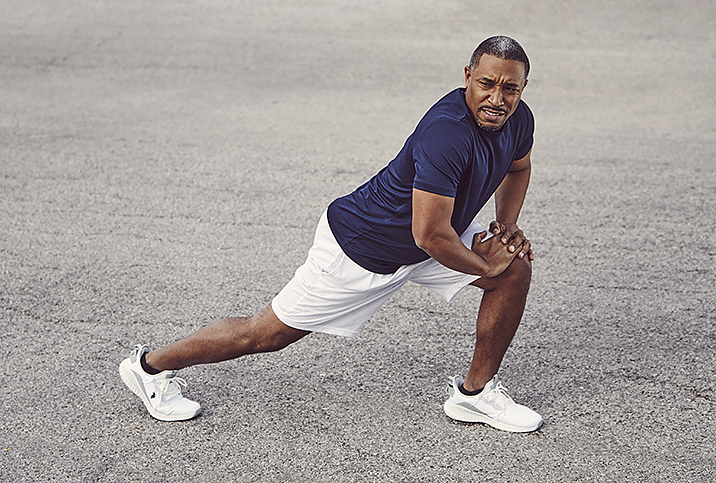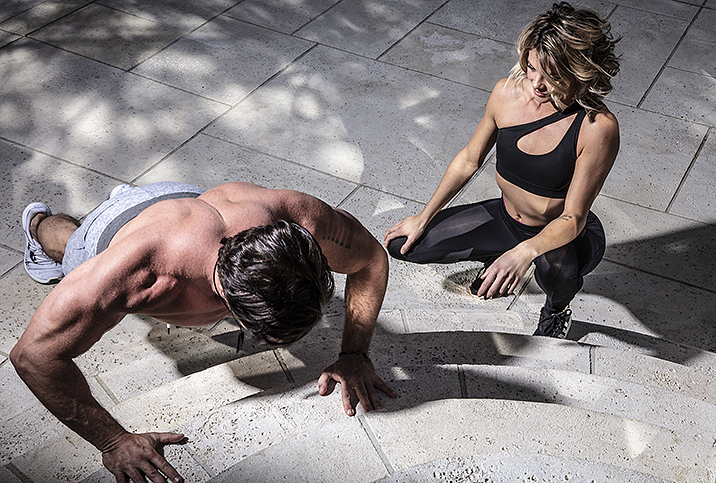Exercising Can Improve Outcomes for Prostate Cancer

Aside from skin cancer, prostate cancer is the most prevalent form of cancer that affects men in the United States, according to the American Cancer Society. In fact, 1 in 8 men can expect to receive a prostate cancer diagnosis over the course of their lives. This translates to more than 268,000 diagnoses each year. And while you can never completely eliminate your risk of developing cancer, there are lifestyle factors you can manage to help reduce it.
Even in the event that you do receive a diagnosis, maintaining a healthy lifestyle, which includes regular exercise, can help improve your outcomes. No, you don't have to become a marathon runner or a gym rat to enjoy the benefits. Here's what you need to know about the interaction between exercise and prostate cancer.
Reducing cancer risk
Unfortunately, one major risk factor for prostate cancer is age—most diagnoses occur in men over the age of 65—and there's nothing you can do to stop the passage of time. However, there are other ways to manage your prostate cancer risk.
"Studies have found that men who get regular physical activity have a slightly lower risk of prostate cancer," said Mehran Movassaghi, M.D., a urologist and director of men's health at Providence Saint John's Health Center and assistant professor of urology at Saint John's Cancer Institute in Santa Monica, California. "Vigorous activity may have a greater effect, especially on the risk of advanced prostate cancer."
Cardiovascular activities—specifically, walking, swimming, running or using a cardio machine at the gym—seem to be particularly helpful.
'Studies have found that men who get regular physical activity have a slightly lower risk of prostate cancer.'
"Regular cardiovascular exercise can lead to the reduction of inflammation and boost the immune system," said S. Adam Ramin, M.D., a urologic surgeon and medical director of Urology Cancer Specialists in Los Angeles. "This can potentially support a healthier body and possibly reduce the risk of developing cancer."
Of course, steady-state cardio isn't the only way to reap benefits. High-intensity interval training (HIIT) and circuit-style workouts that raise your heart rate while also improving muscular fitness are good options as well. However, while HIIT is an effective workout routine, it is important to work your way up in intensity to avoid injury.
That said, there's one form of exercise that both Movassaghi and Ramin warn against and that's cycling. Granted, a little bit here and there aren't going to cause major problems, but "prolonged cycling should be avoided as it places pressure on the perineum," according to Movassaghi.
Reducing side effects
Even if you've never been into exercising before, you might want to carve out some time to make it a priority while going through treatment. This is because regular exercise appears to help reduce many of the common negative side effects of treatment, specifically, a type of treatment called androgen deprivation therapy (ADT).
"The side effects of ADT can include muscle loss, an increase in fat mass, and the bone disease of osteoporosis," Movassaghi explained. "Risk for diabetes and heart disease also increases with ADT. Exercise improves heart health and bone density, as well as decreases the risk of diabetes and obesity."
In essence, it counteracts the side effects, which can help prevent and reduce secondary health issues that may arise.
It's important to recognize that cancer, and cancer treatments, put you through the wringer. They're stressful, hard on the body and often leave you feeling awful. If the thought of hitting the road for a run seems impossible, give yourself some grace and know it's okay to keep activity low-key.
"If a patient is undergoing aggressive treatment like chemotherapy, they may not have enough energy for strenuous cardiovascular exercise," Ramin said. "In such a circumstance, walking and yoga are excellent forms of maintaining a healthy physiology and healthy state of mind."
To apply this to your personal schedule, Ramin suggested just 20 to 30 minutes of cardio (as simple as walking) every other day to every day.
"Try to do as much as the body allows without causing excess fatigue or muscle pain," Ramin said. "For patients who have the energy to put in a stronger effort, this means raising their basal heart rate by 60 to 80 percent. Those who have less energy can maintain their baseline heart rate, but still have meaningful results by walking or doing yoga."
Your workouts don't have to be limited to traditional exercise, either. Prostate cancer surgery can weaken the pelvic floor muscles, so adding Kegel exercises (yes, men can do Kegels, too!) or pelvic floor physical therapy can improve outcomes and reduce the likelihood of incontinence. To do a Kegel, simply try to "lift" your pelvic floor as though you were trying to stop the flow of urine. Hold for up to 10 seconds, then release. Try performing three sets of 10 repetitions per day, or ask your doctor or physical therapist for a routine based on your needs and symptoms.
Exercise can improve cancer outcomes
Regular exercise before, during, and after treatment can all help improve long-term prostate cancer outcomes.
"Physical activity is associated with better survival, and a modest amount of physical activity, about three hours a week, may substantially improve prostate cancer survival," Movassaghi noted. "The link is likely related to lower weight as weight gain has been shown to increase recurrence in men with prostate cancer, and make it harder to screen patients for prostate cancer which is key in early detection. Both resistance training and aerobic exercise are important."
One essential thing to remember is that staying active can help reduce the likelihood of a cancer diagnosis, and in the event of a diagnosis, can improve symptoms of treatment and long-term outcomes. It doesn't take an overly-zealous workout routine to see results. Just 20 to 30 minutes of cardio exercise a few times per week can do wonders for your heart, lungs, immune system, and even your prostate.


















